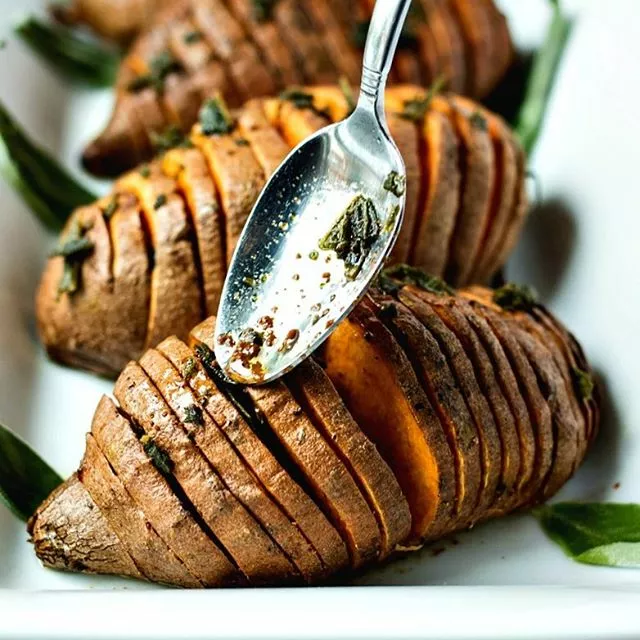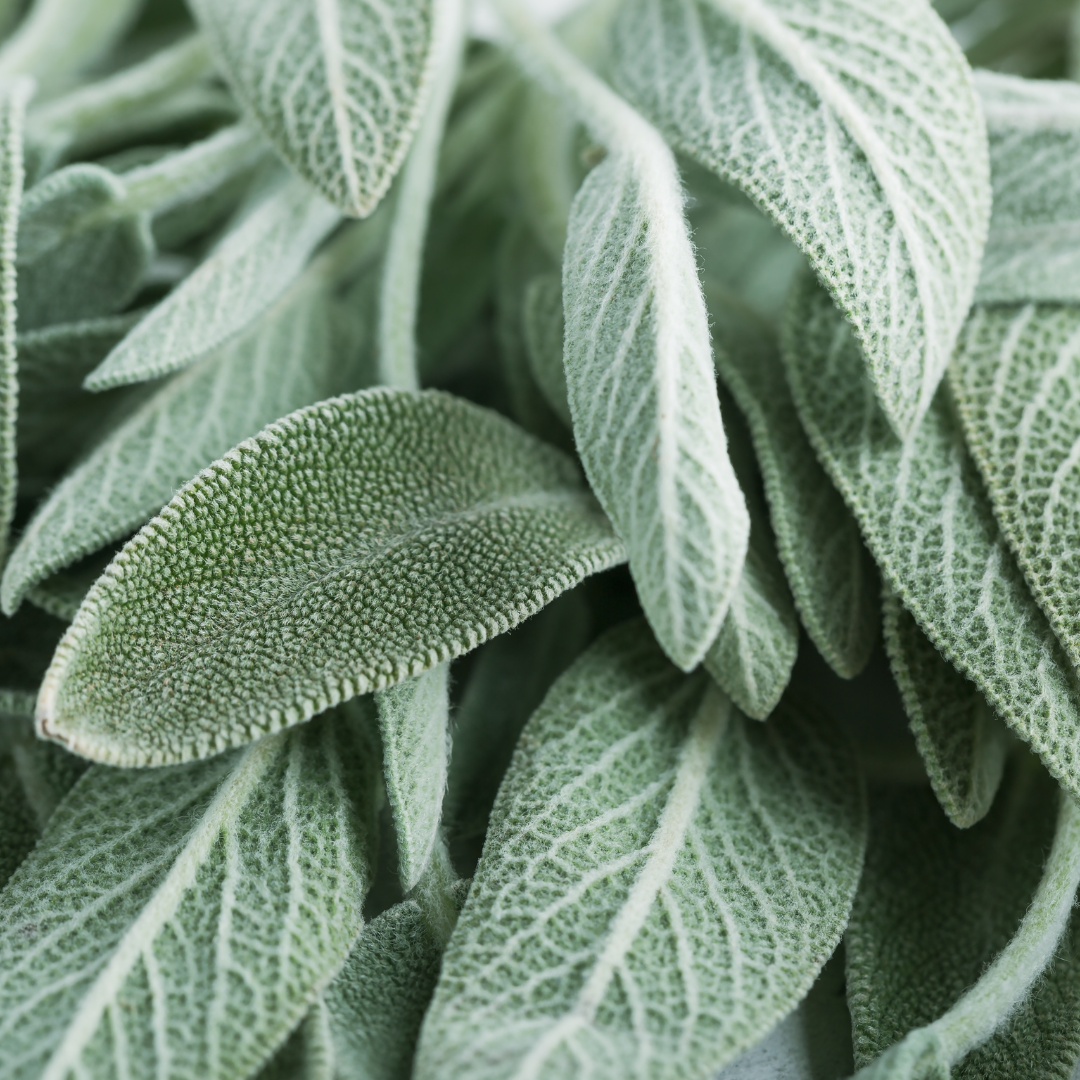Sage advice … the Herb of Thanksgiving

Now that Halloween is in the cold, snowy rearview mirror, is it time for pumpkin spice to ride off, too?
Maybe not, but as we turned the calendar page to November, there is a different herb that IS king this month. The herb that defines Thanksgiving — sage.
Sage is responsible for “that smell.” The smell of opening the front door and breathing in the smell of Thanksgiving dinner cooking. The smell of home, hearth, family and Thanksgiving stuffing. Or do you say dressing? It is a toss-up, just like the pop vs. soda debate, everyone is right and wrong at the same time.
Technically stuffing is stuffed into the bird; dressing cooked separately in a dish. Cooking “dressing-style” is preferred by food safety experts, because sometimes that moist bread inside the bird doesn’t cook all the way up to a food-safe temperature.
Sage (botanically called Salvia) is a perennial herb in our area, one of the few that can take the occasional tough winter. That is pretty amazing because sage, like many of our herbs and spices, is native to the Mediterranean.
Sage has a long history, not only culinarily but medicinally. Salvia literally means to save or to heal. And even the common name “sage” still is used to attribute wisdom.
But sage isn’t just a plant the kitchen herb. It is actually a large plant genus. The sage of the kitchen is called common, culinary, kitchen or garden sage, officially is called Salvia officinalis. Sage/Salvia has many other species that are ornamental only. From the fire-engine red bedding annual plant, Scarlet Sage (Salvia splendens) and Blue Victoria Sage (Salvia farinacea) to the hummingbird magnet tender perennial, Black and Blue Salvia (Salvia guaranitica).
All sages have “lipped” flowers called bilabiate. And this open-mouth structure makes it a welcome mat for our pollinators. The flowers of the edible sages are edible for us and make a pretty garnish on beverages and salads. They tend to have a milder flavor than the leaves of the plant. And sage is known to have a “robust” flavor, so remember a little goes a long way.
Today’s column is dedicated to the common kitchen sage. But that said, the edible sage is also horticulturally beautiful with its pebbly-textured, blue grey/green leaves. Sage, like most herbs, prefers a well-drained soil in a sunny or part sun-spot. Many sources call sage a short-lived perennial, because after a year or two, the stem becomes quite woody. Some gardeners prefer to replace sage every couple years.
The edible garden sage has a few varieties that feature festively colored leaves like bi-colored, tri-colored, purple and white-edged sage. There are also some culinary sages that have different flavor profiles. Every year, I make sure to buy a few pineapple sage plants. The leaves do have an aromantic smell and flavor of pineapple, and the bright-red, late-summer flowers are a hummingbird favorite. Another other-flavored variety is Honey Melon Sage and has a flavor reminiscent of honeydew melon.
Edible sage can grow to about two and a half feet tall, although there are many shorter varieties. Garden sage doesn’t just have to be relegated to the kitchen garden area as it is attractive mixed into your perennial border. And like other herbs, sage rarely is bothered by pests due to its high essential oil content.
You can also plant sage in a container making sure to use good-quality potting mix and a container with a drainage hole. But don’t think you have to wait until spring to purchase a sage plant. Many of our grocery stores carry a nice selection of herb plants, including sage, in the produce section year-round. Just be sure to keep any herb plant purchased in the “off season” in a sunny window but away from drafts. What a wonderful hostess gift a small basket of potted herbs would make!
When using sage in the kitchen, pick fresh leaves that are free of spots. You can store sage leaves in the refrigerator for up to 5 days wrapped in a moist paper towel. You can also dry sage by harvesting some stems, tying them up with a rubber band and letting them dry; then storing in an airtight container.
Besides the traditional herb of stuffing/dressing, sage pairs well with fatty meats like sausages, and is particularly delicious added to browned butter for a simple sauce over pasta or in the recipe below.
Hasselback Sweet Potatoes with Sage Brown Butter
4 small same-sized sweet potatoes
1 stick butter
¼ fresh lemon
Oil of your choice
Salt
Preheat oven to 400 degrees. Wash sweet potatoes. Using a wooden spoon as a guide, place potato next to spoon and cut down vertically, stopping when reaching the spoon. Space cuts ¼ inch along entire potato. Cut all potatoes in this manner. On a foil-lined baking sheet, place potatoes cut sides up and drizzle with oil and (if desired) sprinkle with salt. Bake potatoes for 45 minutes.
Meanwhile prepare the brown butter sage. Slice butter. Chop sage. Cook in a saucepan over medium heat. When butter begins to bubble, add sage. Do not stir. Butter will begin to foam, it’s ready when foam disappears, and butter color is brown. Sage leaves should appear crispy but not burned.
Transfer brown butter sauce to bowl, to prevent further cooking. When potatoes are finished baking, pour brown butter sage sauce over and serve immediately. Serves 4.

The velvety blue, brown, gray leaves of culinary sage